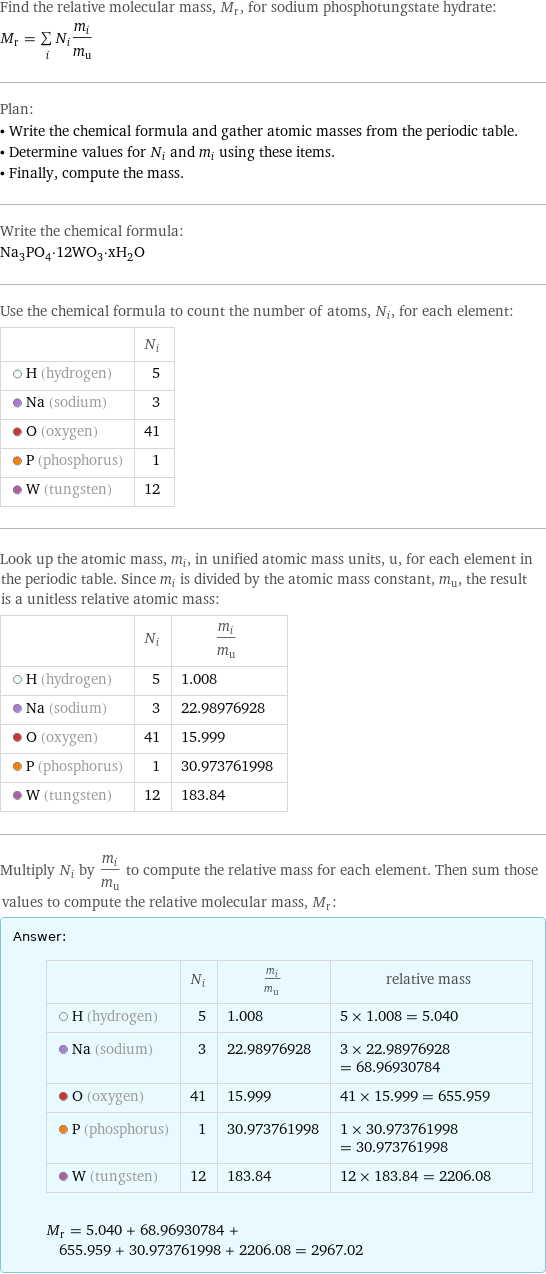Input interpretation

sodium phosphotungstate hydrate | relative molecular mass
Result

Find the relative molecular mass, M_r, for sodium phosphotungstate hydrate: M_r = sum _iN_im_i/m_u Plan: • Write the chemical formula and gather atomic masses from the periodic table. • Determine values for N_i and m_i using these items. • Finally, compute the mass. Write the chemical formula: Na_3PO_4·12WO_3·xH_2O Use the chemical formula to count the number of atoms, N_i, for each element: | N_i H (hydrogen) | 5 Na (sodium) | 3 O (oxygen) | 41 P (phosphorus) | 1 W (tungsten) | 12 Look up the atomic mass, m_i, in unified atomic mass units, u, for each element in the periodic table. Since m_i is divided by the atomic mass constant, m_u, the result is a unitless relative atomic mass: | N_i | m_i/m_u H (hydrogen) | 5 | 1.008 Na (sodium) | 3 | 22.98976928 O (oxygen) | 41 | 15.999 P (phosphorus) | 1 | 30.973761998 W (tungsten) | 12 | 183.84 Multiply N_i by m_i/m_u to compute the relative mass for each element. Then sum those values to compute the relative molecular mass, M_r: Answer: | | | N_i | m_i/m_u | relative mass H (hydrogen) | 5 | 1.008 | 5 × 1.008 = 5.040 Na (sodium) | 3 | 22.98976928 | 3 × 22.98976928 = 68.96930784 O (oxygen) | 41 | 15.999 | 41 × 15.999 = 655.959 P (phosphorus) | 1 | 30.973761998 | 1 × 30.973761998 = 30.973761998 W (tungsten) | 12 | 183.84 | 12 × 183.84 = 2206.08 M_r = 5.040 + 68.96930784 + 655.959 + 30.973761998 + 2206.08 = 2967.02
Comparisons

≈ 4.1 × relative molecular mass of fullerene ( ≈ 721 )

≈ 15 × relative molecular mass of caffeine ( ≈ 194 )

≈ 51 × relative molecular mass of sodium chloride ( ≈ 58 )
Corresponding quantities

Molar mass M from M = M_uM_r: | 3 kg/mol (kilograms per mole)

Molecular mass m from m = M_rM_u/N_A: | 4.9×10^-21 grams | 4.9×10^-24 kg (kilograms)